CHEVROLET BLAZER 1993 Owners Manual
Manufacturer: CHEVROLET, Model Year: 1993, Model line: BLAZER, Model: CHEVROLET BLAZER 1993Pages: 386, PDF Size: 20.7 MB
Page 261 of 386
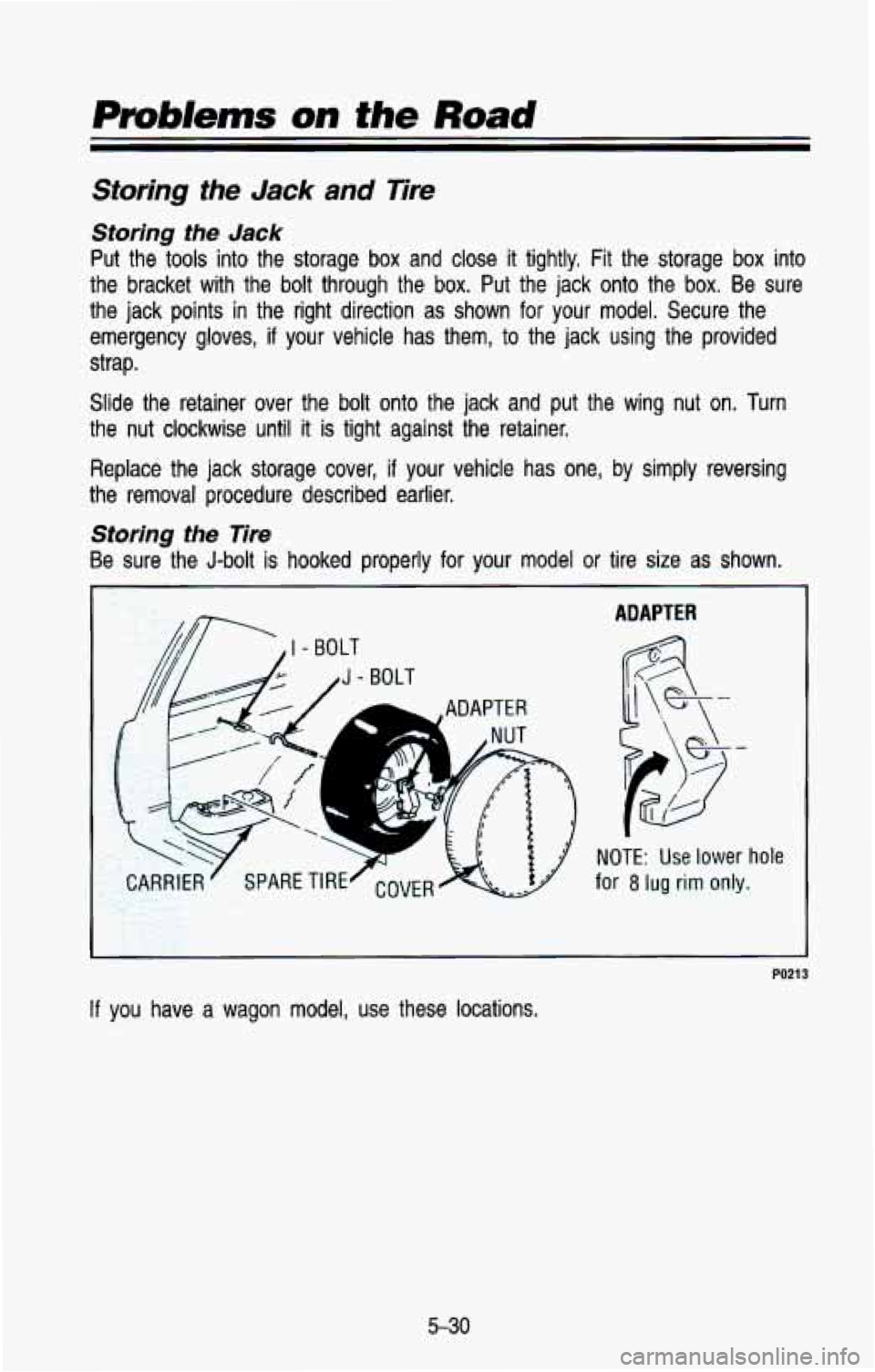
Problems on the Road
Storing the Jack and Tire
Storhg the Jack
Put the tools into the storage box and close it tightly, Fit the storage box into
the bracket with the bolt through the box. Put the jack onto the
box. Be sure
the jack points in the right direction as shown for your mode\
l. Secure the
emergency gloves,
if your vehicle has them, to the jack using the provided
strap.
Slide the retainer over the bolt onto the jack and put the w\
ing nut on. Turn
the nut clockwise until it is tight against the retainer.
Replace the jack storage cover,
if your vehicle has one, by simply reversing
the removal procedure described earlier.
Storing the Tire
Be sure the J-bolt is hooked properly for your model or tire size as shown.
n
I - BOLT
J - BOLT
,ADAPTER
ADAPTER
NOTE: Use lower hole
for 8 lug rim only.
L
PO21 3
If you have a wagon model, use these locations.
5-30
Page 262 of 386
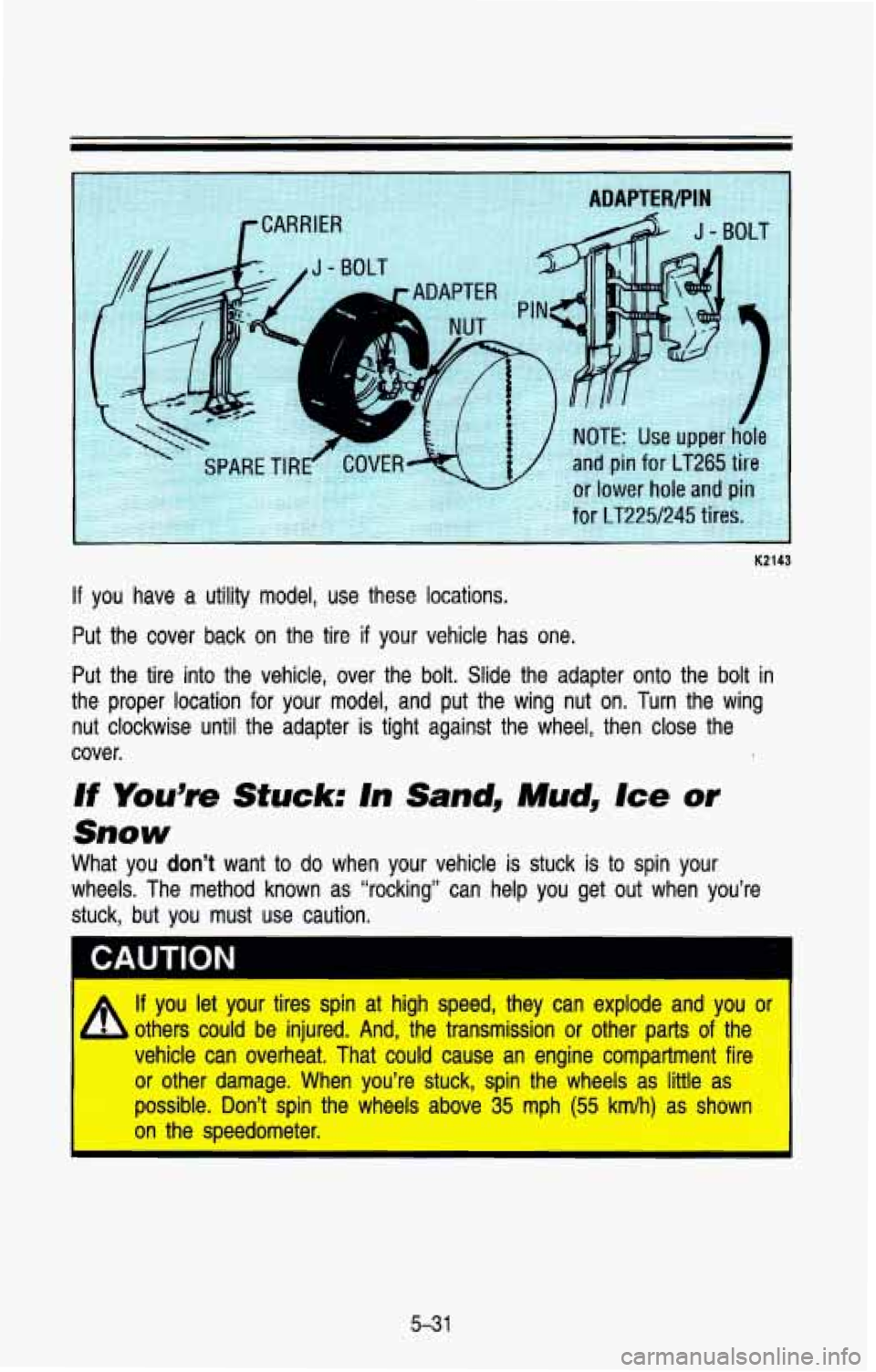
K2143
If you have a utility model, use these locations.
Put the cover back on the tire if your vehicle has one.
Put the tire into the vehicle, over the bolt. Slide the adapter onto the bolt in
the proper location for your model, and put the wing nut on. Turn\
the wing
nut clockwise until the adapter is tight against the wheel, then close the
cover.
If You’re Stuck: In Sand, Mud, Ice or
Snow
What you don’t want to do when your vehicle is stuck is to spin your
wheels. The method known as “rocking” can help you get o\
ut when you’re stuck, but you must use caution.
If you let your tires spin at high speed, they can explode and \
you or I
I-, others could be injured. And, the transmission or other parts of the
vehicle can overheat. That could cause an engine compartment fi\
re or other damage. When you’re stuck, spin the wheels as litt\
le as
possible. Don’t spin the wheels above
35 mph (55 kmlh) as shown
on the speedometer.
5-31
Page 263 of 386
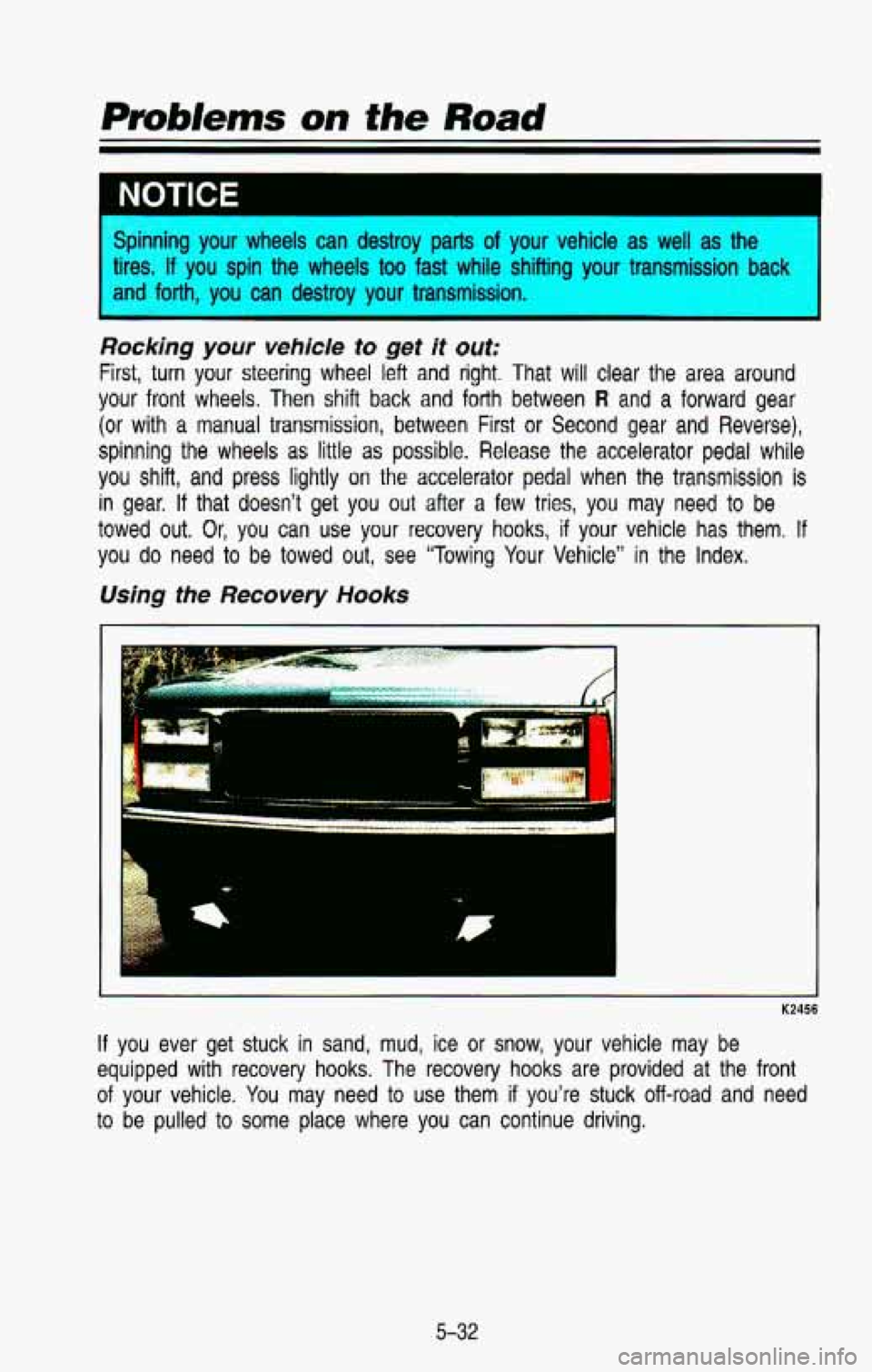
Pmb/ems on the Road
Spinning your wheels can destroy parts of your vehicle as well as the
Rocking your vehicle to get it out:
First, turn your steering wheel left and right. That will clear the area around
your front wheels. Then shift back and forth between R and a forward gear
(or with a manual transmission, between First or Second gear and Reverse),
spinning the wheels as little as possible. Release the accelerator pedal while
you shift, and press lightly on the accelerator pedal when the transmission is
in gear. If that doesn’t get you out after a few tries, you may need to be
towed out. Or, you can use your recovery hooks, if your vehicle has them. If
you do need to be towed out, see “Towing Your Vehicle” in the Index.
Using the Recovery Hooks
m
K2456
If you ever get stuck in sand, mud, ice or snow, your vehicle may be
equipped with recovery hooks. The recovery hooks are provided a\
t the front
of your vehicle. You may need to use them if you’re stuck off-road and need
to be pulled to some place where you can continue driving.
5-32
Page 264 of 386
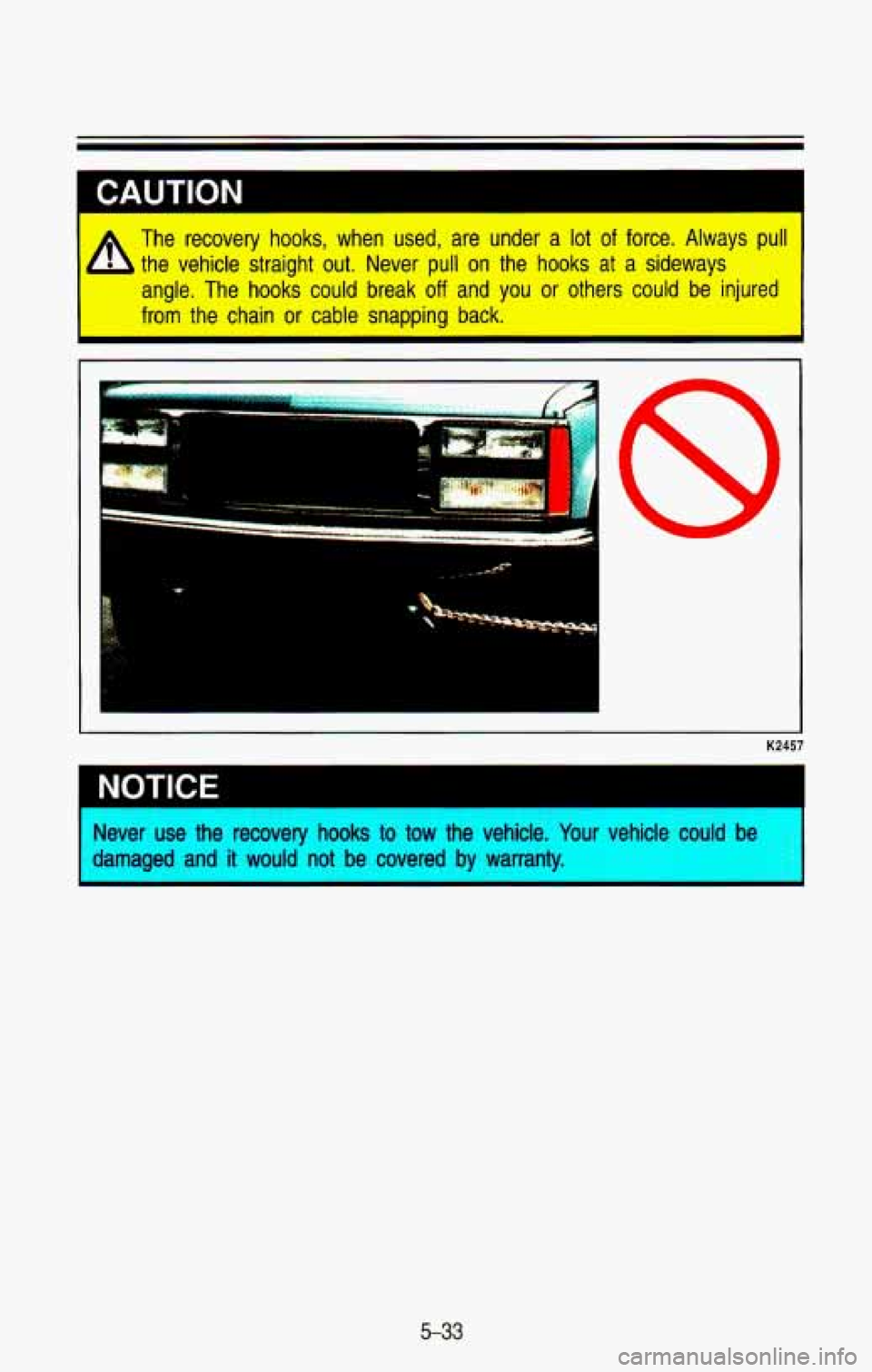
The recovery hooks, when used, are under a lot of force. Always pull
the vehicle straight out. Never pull
on the hooks at a sideways
angle. The hooks could break
off and you or others could be i * Irec'
from the chain or cable snapping back.
b
J
7
d
K2457
I NOTICE
I
Never use the recovery hooks to tow the vehicle. Your vehicle could be
damaged and it would not be covered by warranty.
I
5-33
Page 265 of 386
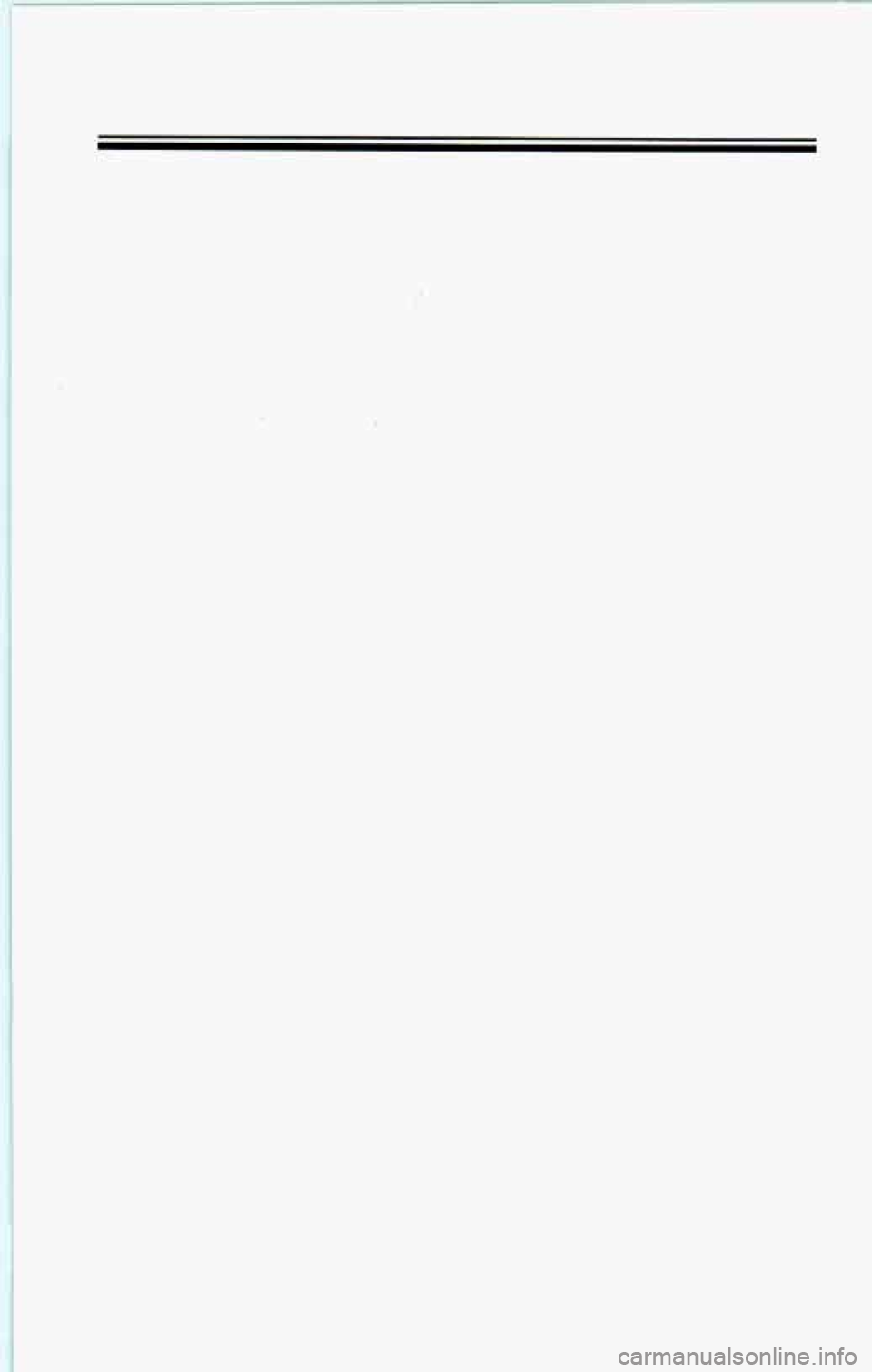
Page 266 of 386
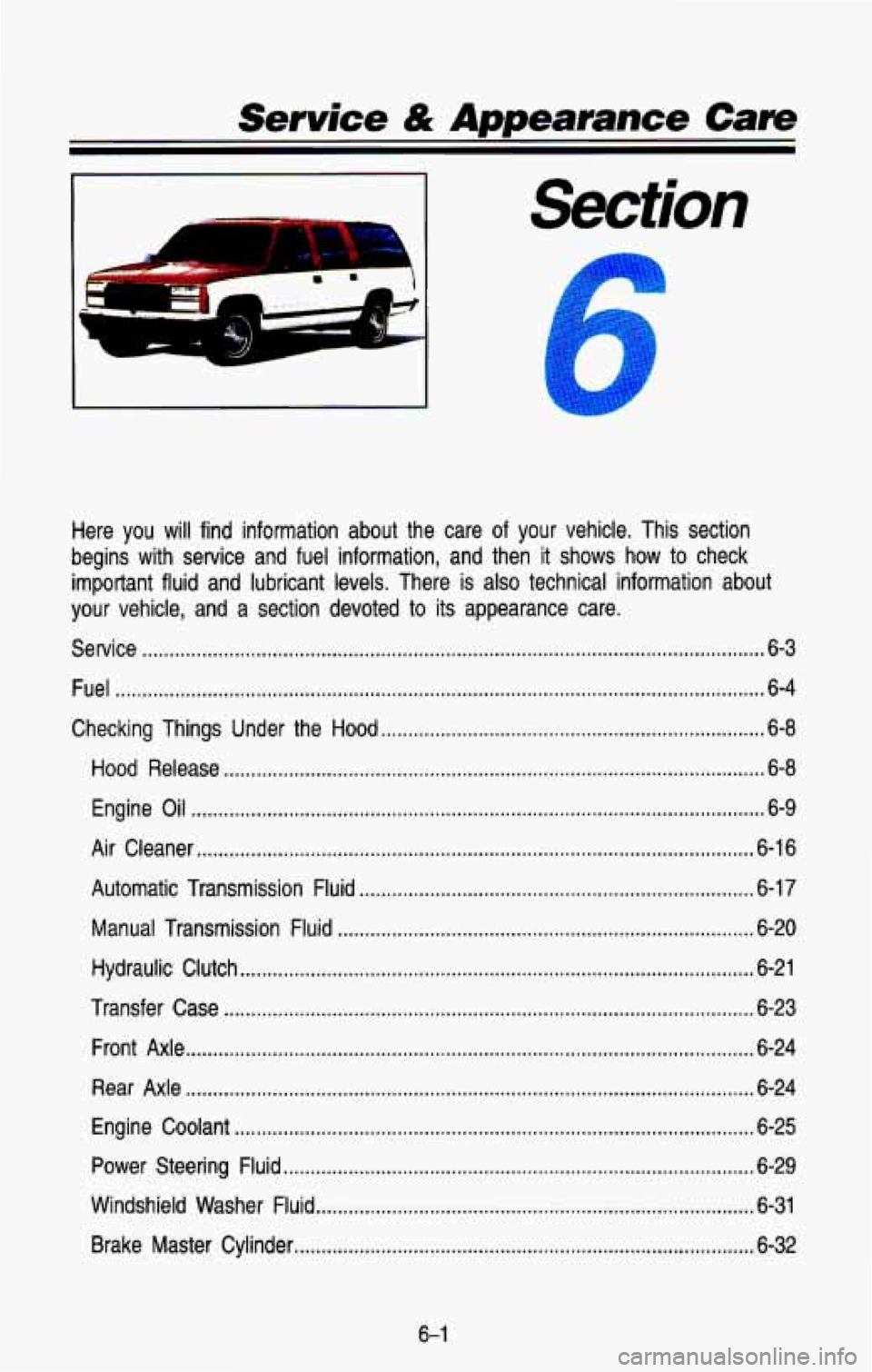
Service & Appearance Care
.
Here you will find information about the care of your vehicle . This section
begins with service and fuel information. and then it shows
how to check
important fluid and lubricant levels
. There is also technical information about
your vehicle. and a section devoted to its appearance care
.
Service ........................................................................\
........................................... 6-3
Fuel ........................................................................\
................................................ 6-4
Checking Things Under the Hood
....................................................................... \
6-8
Hood Release
........................................................................\
............................ 6-8
Engine Oil ........................................................................\
.................................. 6-9
Air Cleaner
........................................................................\
............................... 6-16
Automatic Transmission Fluid
........................................................................\
. 6-17
Manual Transmission Fluid ........................................................................\
..... 6-20
Hydraulic Clutch
........................................................................\
....................... 6-21
Transfer Case
........................................................................\
.......................... 6-23
Front
Axle ........................................................................\
................................. 6-24
Rear Axle
........................................................................\
................................. 6-24
Engine Coolant
........................................................................\
........................ 6-25
Power Steering Fluid
........................................................................\
............... 6-29
Windshield Washer Fluid
........................................................................\
......... 6-31
Brake Master Cylinder
........................................................................\
............. 6-32
6-1
Page 267 of 386
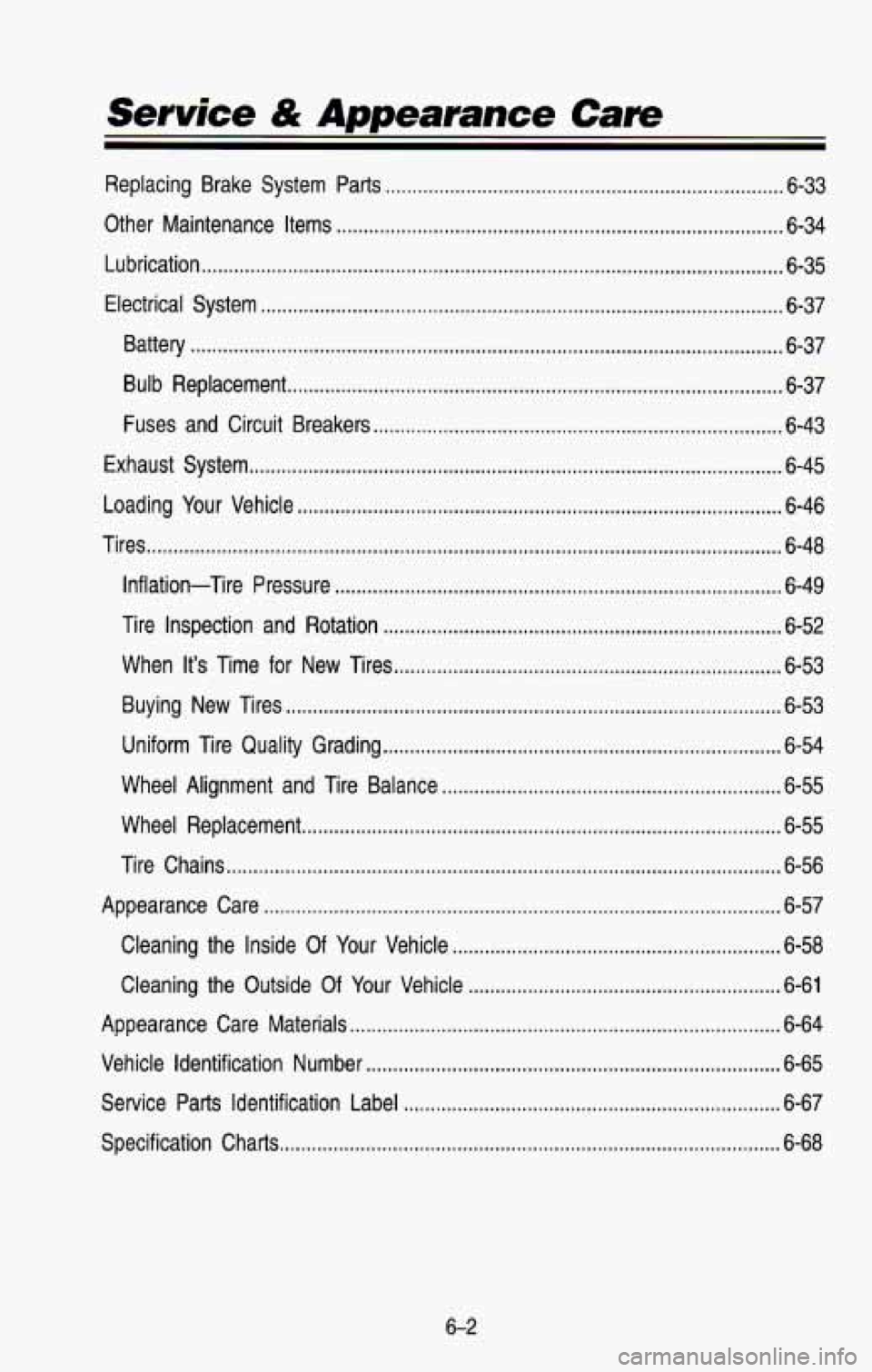
Service & Appearance Care
Replacing Brake System Parts ........................................................................\
.. 6-33
Other Maintenance Items
........................................................................\
........... 6-34
Lubrication
........................................................................\
.................................... 6-35
Electrical System
........................................................................\
......................... 6-37
Battery
........................................................................\
...................................... 6-37
Bulb Replacement
........................................................................\
.................... 6-37
Fuses and Circuit Breakers
........................................................................\
.... 6-43
Exhaust System
........................................................................\
........................... 6-45
Loading Your Vehicle
........................................................................\
.................. 6-46
Tires
........................................................................\
.............................................. 6-48
Inflation-Tire Pressure
........................................................................\
........... 6-49
Tire Inspection and Rotation
........................................................................\
.. 6-52
When It’s Time for New Tires ........................................................................\
6-53
Buying New Tires
........................................................................\
.................... 6-53
Uniform Tire Quality Grading
........................................................................\
.. 6-54
Wheel Alignment and Tire Balance
............................................................... 6-55
Wheel Replacement
........................................................................\
................. 6-55
Tire Chains
........................................................................\
............................... 6-56
Appearance Care
........................................................................\
........................ 6-57
Cleaning the Inside Of Your Vehicle
............................................................. 6-58
Cleaning the Outside
Of Your Vehicle .......................................................... 6-61
Appearance Care Materials
........................................................................\
........ 6-64
Vehicle Identification Number
........................................................................\
..... 6-65
Service Parts Identification Label
...................................................................... 6-67
Specification Charts ........................................................................\
..................... 6-68
6-2
Page 268 of 386
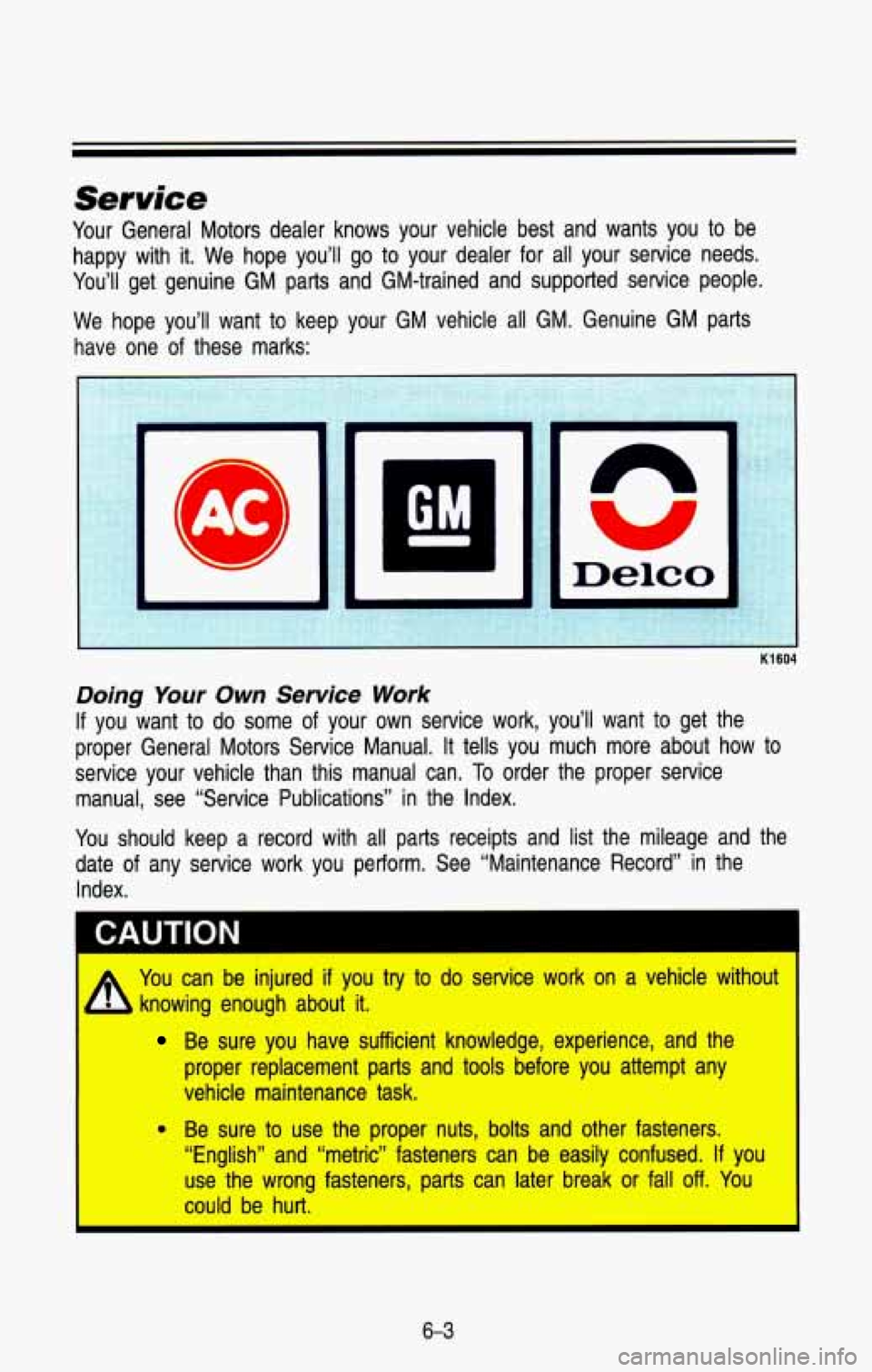
Service
Your General Motors dealer knows your vehicle best and wants you to\
be
happy with it. We hope you’ll go to your dealer for all your service needs.
You’ll get genuine GM parts and GM-trained and supported ser\
vice people.
We hope you’ll want to keep your GM vehicle all GM. Genuine GM parts
have one of these marks:
Doing Your Own Service Work
If you want to do some of your own service work, you’ll want to get the
proper General Motors Service Manual. It tells you much more a\
bout how to
service your vehicle than this manual can.
To order the proper service
manual, see “Service Publications” in the Index.
You should keep
a record with all parts receipts and list the mileage and the
date
of any service work you perform. See “Maintenance Record” in \
the
Index.
CAUTION
I A You can be injured if you try to do service work on a vehicle without
L knowing enough about it.
Be sure you have sufficient knowledge, experience, and the
proper replacement parts and tools before
you attempt any
vehicle maintenance task.
9 Be sure to use the proper nuts, bolts and other fasteners.
“English” and “metric” fasteners can be easily confused.
If you
use the wrong fasteners, parts can later break or fall off. You
could be hurt.
6-3
Page 269 of 386
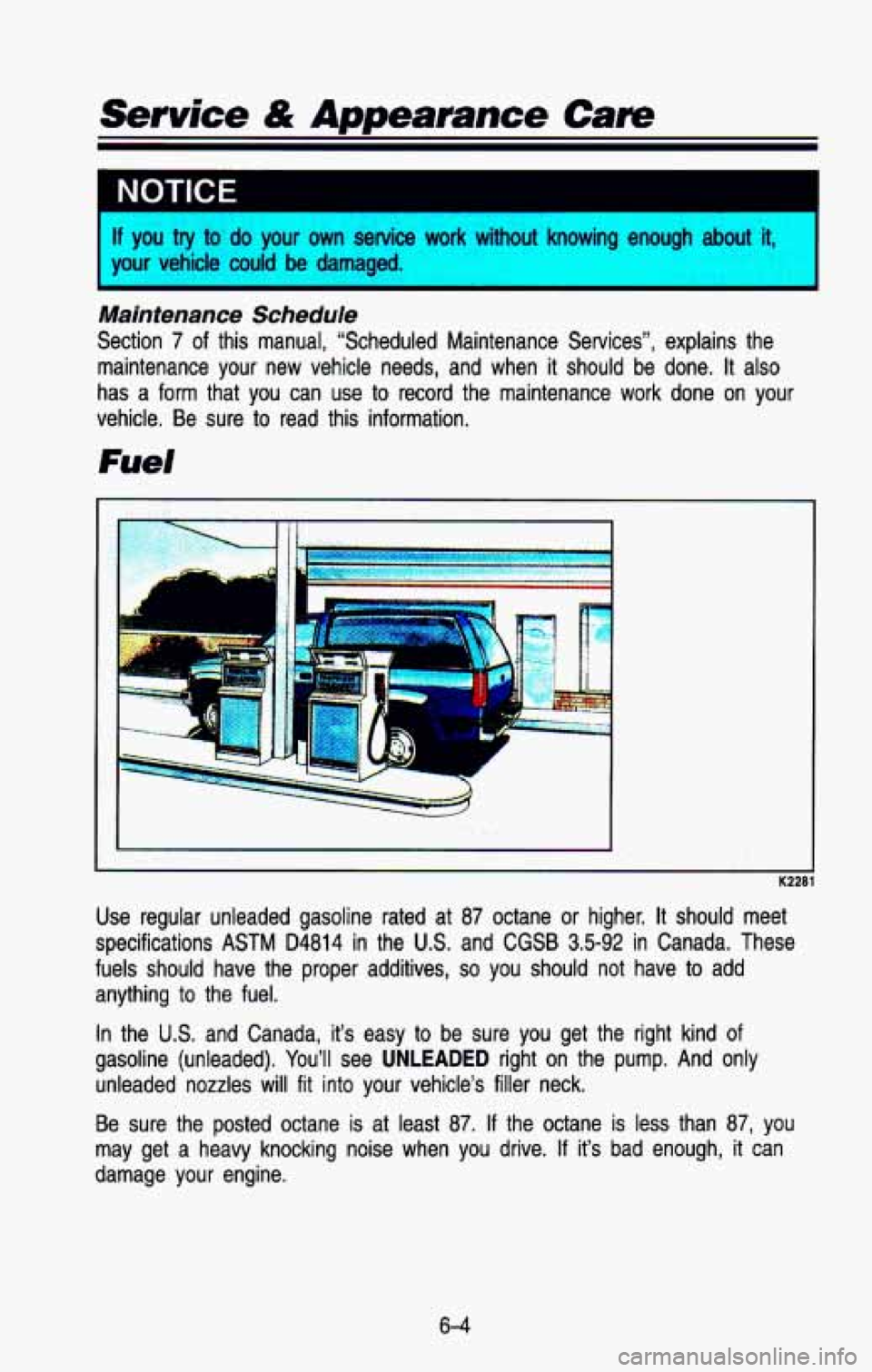
If you try to do your own service work without knowing enough about it,
your vehicle could be damaged.
I
Maintenance Schedule
Section 7 of this manual, “Scheduled Maintenance Services”, explains \
the
maintenance your new vehicle needs, and when
it should be done. It also
has a
form that you can use to record the maintenance work done on your
vehicle. Be sure to read this information.
Fuel
I K228
Use regular unleaded gasoline rated at 87 octane or higher. It should meet
specifications
ASTM D4814 in the U.S. and CGSB 3.5-92 in Canada. These
fuels should have the proper additives,
so you should not have to add
anything
to the fuel.
In the
US. and Canada, it’s easy to be sure you get the right kind of
gasoline (unleaded). You’ll see UNLEADED right on the pump. And only
unleaded nozzles will
fit into your vehicle’s filler neck.
Be sure the posted octane is at least
87. If the octane is less than 87, you
may get a heavy knocking noise when you drive. If it’s bad enough, it can
damage your engine.
6-4
Page 270 of 386
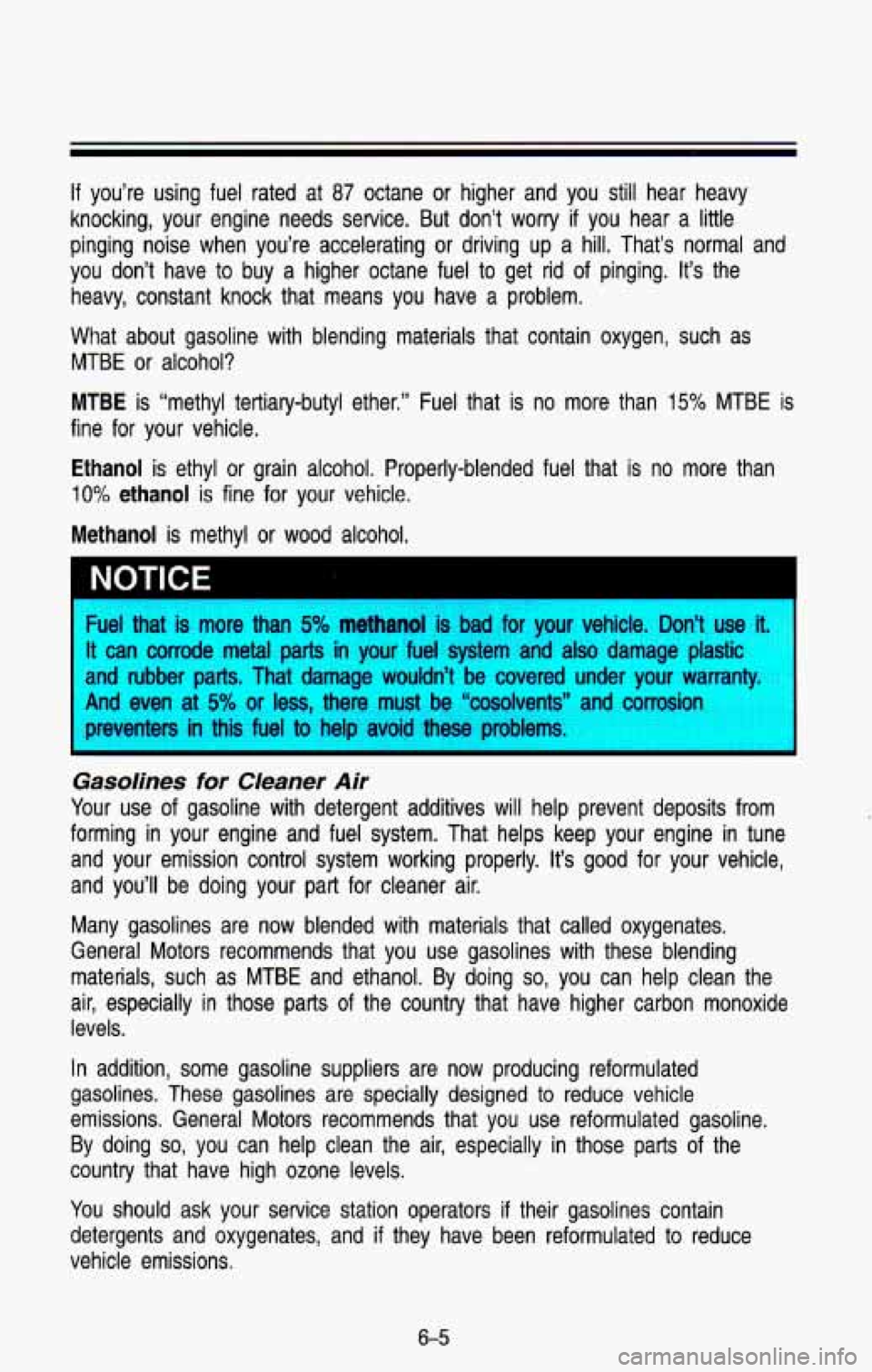
If you’re using fuel rated at 87 octane or higher and you still hear heavy
knocking, your engine needs service. But don’t worry
if you hear a little
pinging noise when you’re accelerating
or driving up a hill. That’s normal and
you don’t have to buy
a higher octane fuel to get rid of pinging. It’s the
heavy, constant knock that means you have
a problem.
What about gasoline with blending materials that contain oxygen,\
such as MTBE
or alcohol?
MTBE is “methyl tertiary-butyl ether.” Fuel that is no more th\
an 15% MTBE is
fine for your vehicle.
Ethanol is ethyl or grain alcohol. Properly-blended fuel that is no more than
10% ethanol is fine for your vehicle.
Methanol is methyl or wood alcohol,
NOTICE
Fuel that is more than 5% methanol is bad for your vehicfe. Don’t use ‘A
It can corrode metal parts in your fuel system and also damage plastic
and rubber
parts. That damage wouldn’t be covered under your warri ’y.
And even at 5% or less, there must be “cosolvents” and corrosion
eventers
in this fuel to help avoid these problems.
Gasolines for Cleaner Air
Your use of gasoline with detergent additives will help prevent depo\
sits from
forming in your engine and fuel system. That helps keep your engine in t\
une
and your emission control system working properly. It’s good \
for your vehicle,
and you’ll be doing your part for cleaner air.
Many gasolines are now blended with materials that called oxyge\
nates.
General Motors recommends that you use gasolines with these ble\
nding
materials, such as MTBE and ethanol. By doing
so, you can help clean the
air, especially in those parts of the country that have higher carbon monoxide
levels.
In addition, some gasoline suppliers are now producing reformulated \
gasolines. These gasolines are specially designed
to reduce vehicle
emissions. General Motors recommends that you use reformulated g\
asoline.
By doing
so, you can help clean the air, especially in those parts of the
country that have high
ozone levels.
You should ask your service station operators if their gasolines co\
ntain
detergents and oxygenates, and if they have been reformulated to reduce
vehicle emissions.
6-5